 |
ULAANBAATAR |
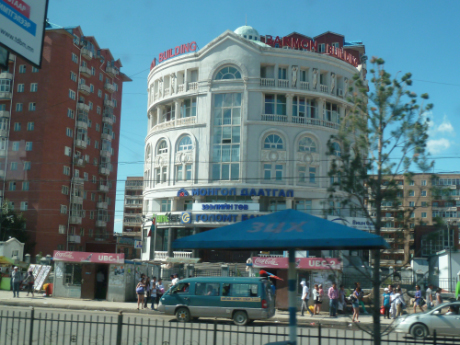 |
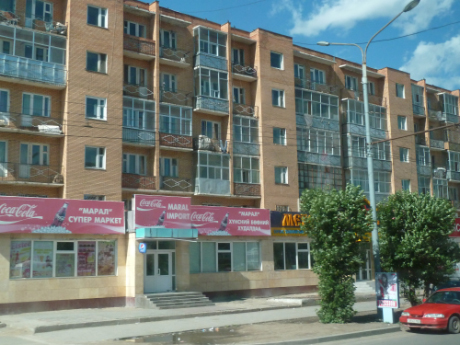 |
|
| The capital and by far the largest city in Mongolia, Ulaanbaatar has eclectic architecture.
|
Many people still live in old Soviet apartment blocks but many of them have been spruced up and retail space has been added to the front at street level.
|
|
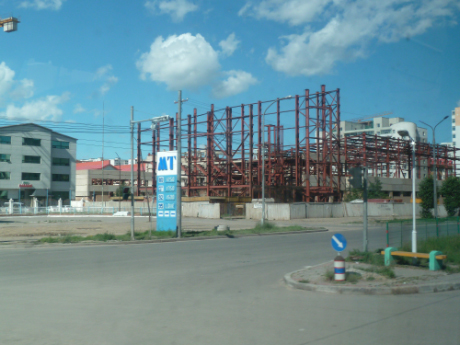 |
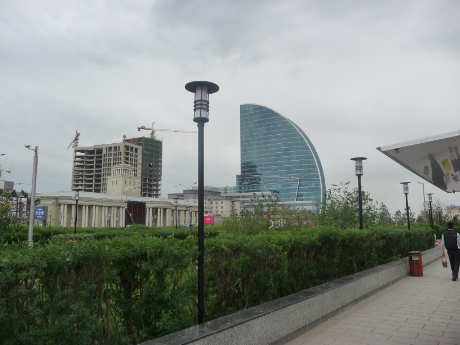 |
|
| There is a tremendous amount of new construction, but most of it is in office buildings and high-end condos, leaving many of the people who have flocked to the capital with no place to live.
|
Some of the buildings, like the Shark Fin (a landmark for us because it was near our hotel) show the influence of modern architecture. | |
 |
||
| Sukhbaatar Square is the main square in Ulaanbaatar; it was about two blocks from our hotel. This beautiful new stone and glass facade hides an ugly Soviert-era government building.
|
||
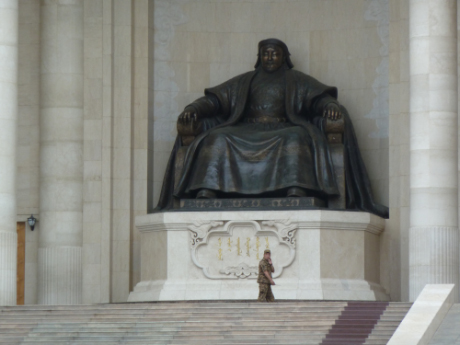 |
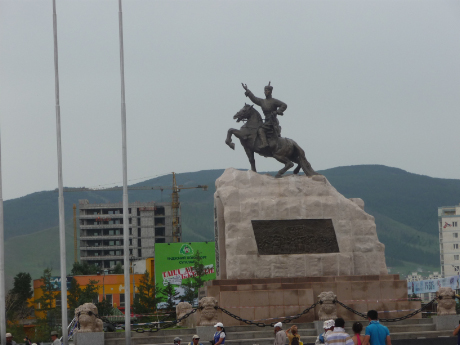 |
|
| The centerpeice of the square is the huge statue of Chinggis Khan. Not Genghis, please--the Mongolians are fussy about that. Chinggis is their national hero and appears everywhere--on money, in statues, in the name of the airport, and on vodka and beer bottles.
|
The square is named for Damdin Sukhbaatar, who led the Mongolians to victory against the Chinese attempt to annex them in 1921. | |
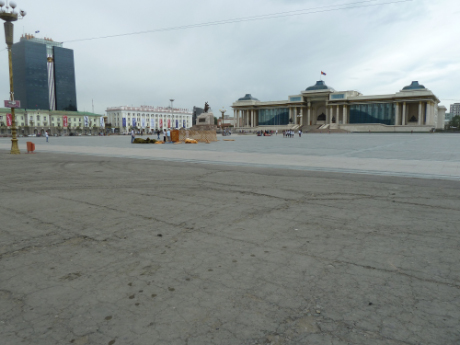 |
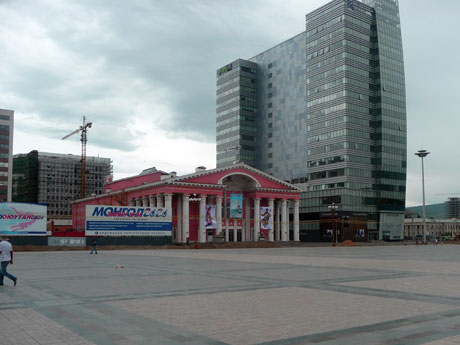 |
|
The square is very large and on this day it was almost deserted except for workers beginning the get ready for Naadam, the big annual festival in Mongolia.
|
The old and the new: The pink-and-white Opera House (1963) and a modern office building. | |
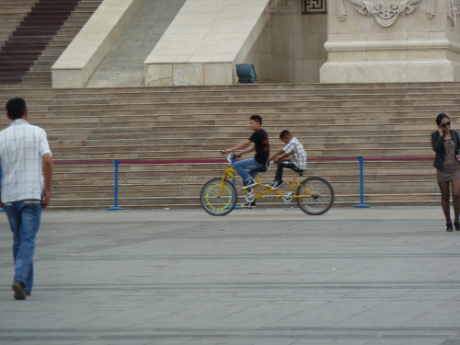 |
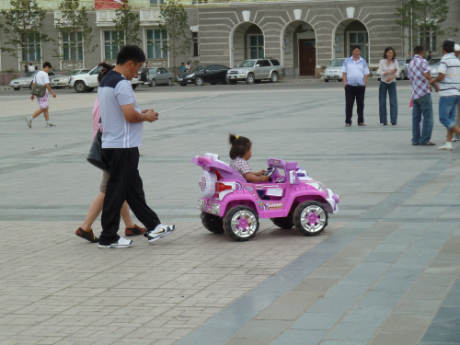 |
|
| On another day we saw many Mongolians enjoying the Square with their families. The radio-controlled kiddie cars were a popular concession in the square.
|
||
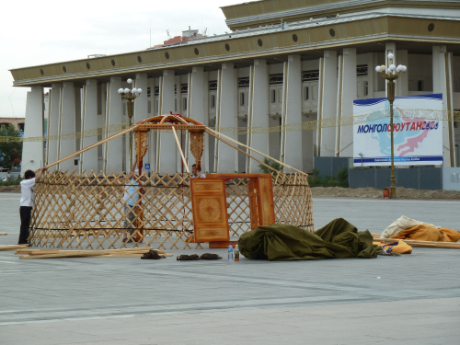 |
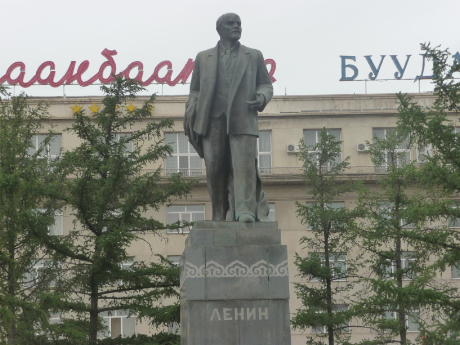 |
|
| Workers were beginning to erect gers (traditional Mongolian tents--also called yurts, but not in Mongolia) in the square; we assumed they were for the Naadam Festival but when we saw the square during the festival, the gers weren't there!
|
A statue of Lenin still looms over the park at the front of our hotel. | |
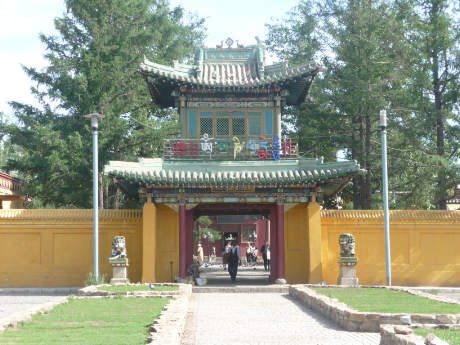 |
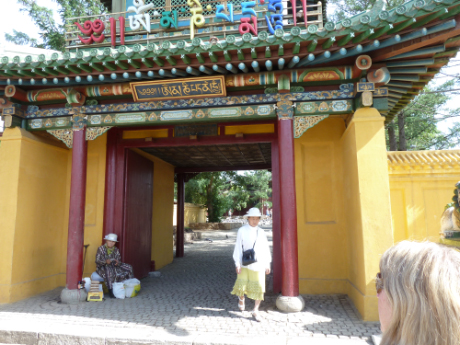 |
|
| We visited the Gandan Monastery, one of the few remaining Buddhist temples that survived the Soviet era.
|
It is still an active teaching and prayer center and welcomes the public. | |
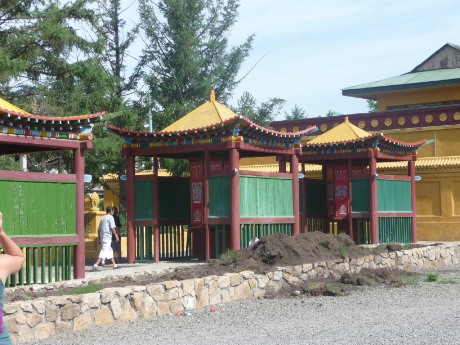 |
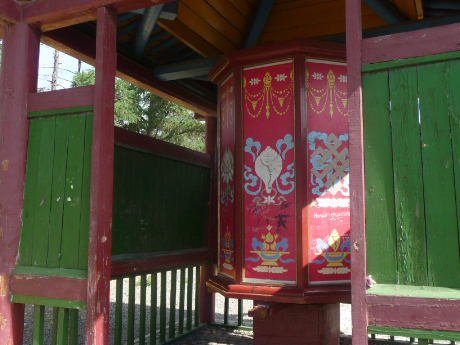 |
|
| Just outside the main gate are three prayer wheels that the faithful can turn--three times clockwise.
|
||
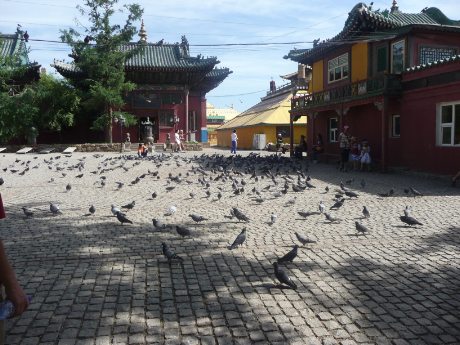 |
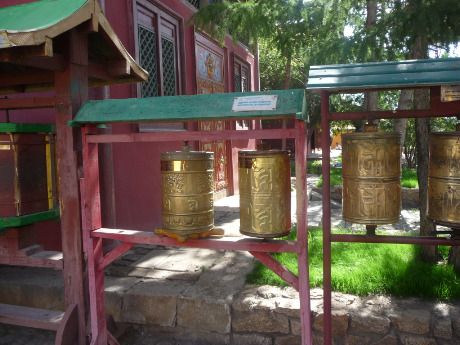 |
|
| Inside the monastery we saw pigeons that rivaled St. Mark's Square in Venice in density. You can buy birdseed to feed them.
|
There are more prayer wheels inside and we saw people walk by and carefully spin each one. Each is different--a gift from someone to commemorate a loved one or an achievement. | |
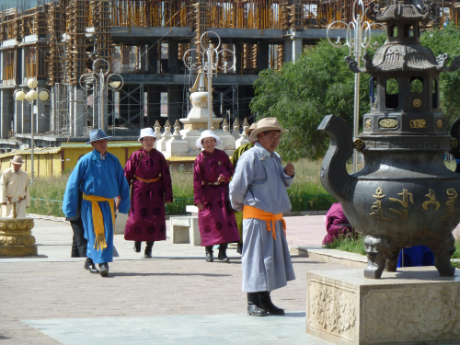 |
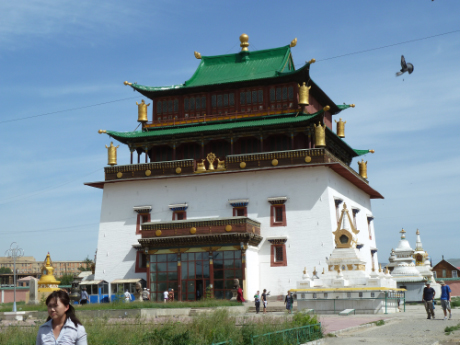 |
|
| There were many people there in traditional Mongolian dress--for men, the deel (coat) and sash. It was close to the Naadam Festival, so perhaps there were more than the usual number of people in traditional dress.
|
The temple complex also has a building that houses an 87-foot gilded statue of Janraisig (the Bodhisattva of Compassion) . | |
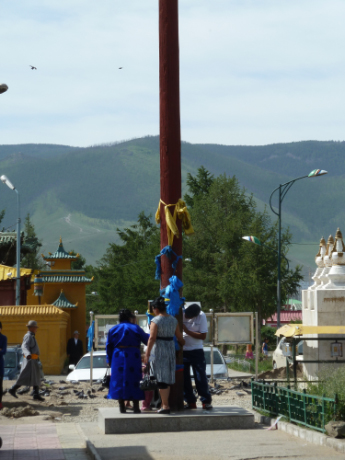 |
||
| This post holds special significance for the Mongolians. After the Soviet soldiers had destroyed much of the monastery for wood, this post started to weep milk. "Freaked out," [as Ider termed it], they left the rest of the monastery standing. People now come to it as a kind of pilgrimage site.
|
||
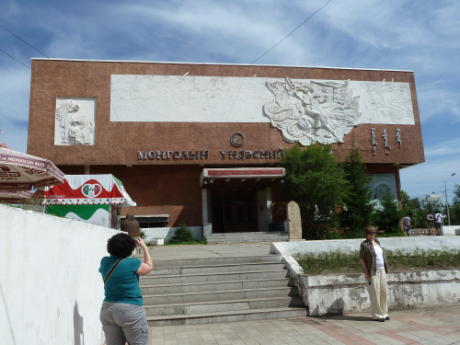 |
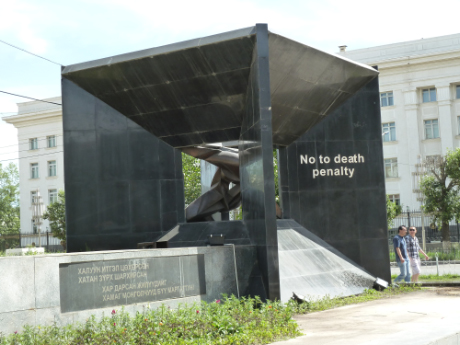 |
|
| We also visited many museums, including the Museum of Mongolian history. | This monument commemorates those who died under Soviet rule. In the Museum, our guide Ider told us a lot about Chinggis Khan and about the 1990 revolution, but skipped lightly over the 70 years of Communist rule. | |

|

|
